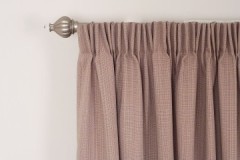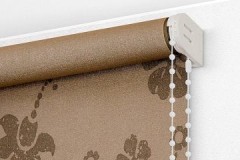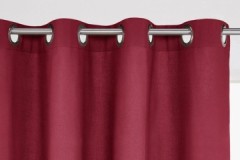Moidodyr's secrets: how to properly wash a bath (shower) curtain with your hands and in a typewriter
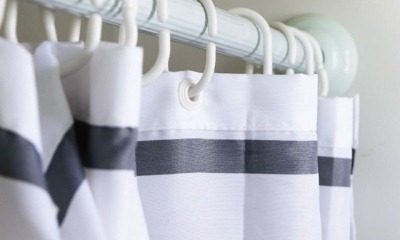 The curtain is an important bathroom accessory that prevents splashing water when taking water procedures and serves as a decoration for the room.
The curtain is an important bathroom accessory that prevents splashing water when taking water procedures and serves as a decoration for the room.
Constantly being in a humid environment, curtains also require washing, and removing stains from mold, lime and rust. Such processing will maintain the hygiene of the room and refresh the material.
Is it possible and how to wash the curtain for a bath (made of polyester and other materials) in the washing machine and by hand to get rid of mold, yellowness and limescale, read the article.
Content
Are there any restrictions on washing curtains?
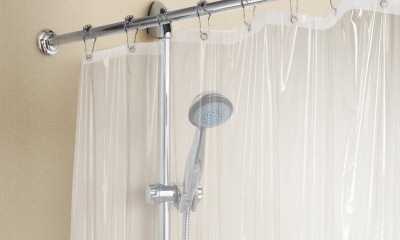 Improper washing of the bathroom curtain can lead to damage and loss of presentable appearance.
Improper washing of the bathroom curtain can lead to damage and loss of presentable appearance.
The cleaning method directly depends on the material of the curtain.
The most common are:
- polyvinyl chloride;
- polyester;
- polyethylene.
PVC and polyester
Vinyl and polyester for the most part are able to survive washing and retain their appearance and performance... Cleaning restrictions may be imposed by the manufacturer of a particular product, so you should examine the label on the product before washing.
If there are no strict restrictions, then automatic washing in a washing machine will be the best option. An exception is the need to remove stains typical for the bathroom: from rust, mold or limescale. For these purposes, household chemicals and homemade recipes are used.
Polyethylene
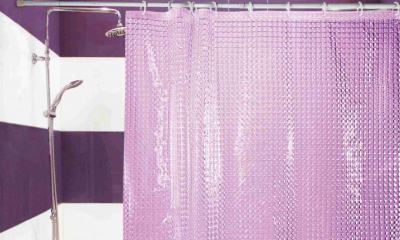 Among all types of materials that are traditionally used to organize curtains in the bathroom, polyethylene is the cheapest and most fragile.
Among all types of materials that are traditionally used to organize curtains in the bathroom, polyethylene is the cheapest and most fragile.
It is able to protect well from splashing, but has a very short service life - up to six months.
Such material will not survive a thorough wash.... The maximum cleaning is a gentle treatment with a non-aggressive agent.For example, Pemolux.
Cleaning is carried out with a soft sponge, without using brushes that can damage thin material. In case of serious contamination, the polyethylene curtain is simply replaced with a new one.
Manually
For curtains that need delicate handling, only hand wash is used.
To clean the curtain you will need:
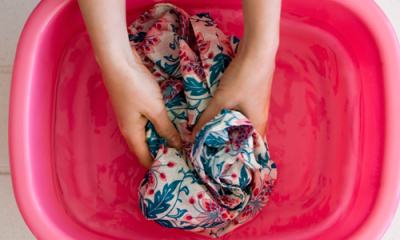 pelvis;
pelvis;- brush;
- water;
- detergent.
Washing procedure:
- Pour warm water into the basin (temperature no more than + 40 ° C).
- Dilute the powder (or other detergent) according to the instructions on the package.
- Dip the curtain into the prepared solution.
- Using a brush, it is necessary to treat the dirty areas and seams of the product. You need to brush it on both sides of the curtain.
- For heavily soiled curtains, cleaning with baking soda can be added. They take it ½ cup and dilute with water to a state of gruel. This mixture can be used to treat heavily soiled areas.
- After washing, the curtain is rinsed in water.
- The curtain is shaken and hung in place by lowering the bottom edge into the tub.
How to wash a bathroom curtain manually, video instruction:
Is it possible in the washing machine?
Washing your curtains in the washing machine is the easiest way to freshen up the fabric. With regular use of curtains, such processing should be carried out 1 time in 60-90 days.
Procedure:
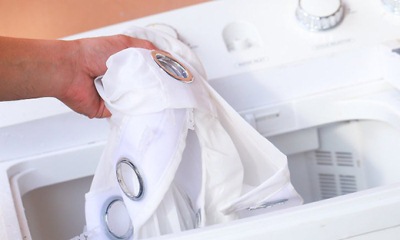 Remove the curtain.
Remove the curtain.- If it has removable fasteners or removable decor, they must be disconnected.
- Place the product in the drum.
- Select the "Delicate" mode.
- Check that the temperature indicator is no more than 40 ° C.
- Disable the "Drying" and "Spin" modes.
- Start the machine.
- Remove the wet curtain from the drum and hang it in place, allowing the water to drain into the bathroom.
Such processing is suitable for lightly soiled curtains. Otherwise, it is advisable to start washing by pre-soaking and treating the stains.
The detergent for such a procedure should be chosen according to the manufacturer's recommendations. curtains. If they do not indicate severe restrictions, then it is possible to use whiteness or other chlorine products.
Under severe restrictions, chlorine-free oxygenated bleach will help. For example, Vanish. Soaking should be done in accordance with the instructions for the specific detergent, and do not use hot water.
How to clean without removing?
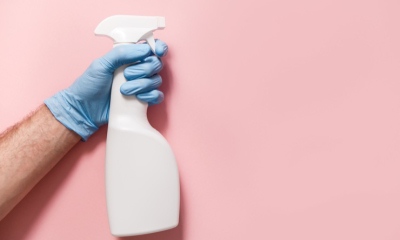 In order for the curtain in the bathroom to retain its presentable appearance longer and serve for a long time, it must not only be washed periodically, but also regularly looked after between washes.
In order for the curtain in the bathroom to retain its presentable appearance longer and serve for a long time, it must not only be washed periodically, but also regularly looked after between washes.
For such processing you will need:
- spray bottle;
- sponge;
- detergent dissolved in water.
For processing, it is advisable to use a detergent in the form of a gel.
Procedure:
- Dilute the detergent in water.
- Pour it into a spray bottle.
- Spray the cleaner over the curtain surface.
- Wipe the material with a sponge.
- Wash off the detergent composition with a sponge or rag.
Features of processing against mold and mildew
A humid bathroom environment and warmth are optimal conditions for mold growth. Routine washing will not be enough to completely eliminate pathogens. Proven recipes will come to the rescue.
Citric acid and soda
In order to remove mold, a combination of mechanical and chemical treatment is required. For cleaning you will need:
- citric acid (1 pack of 50 grams);
- brush;
- soda (1/2 cup).
Working process:
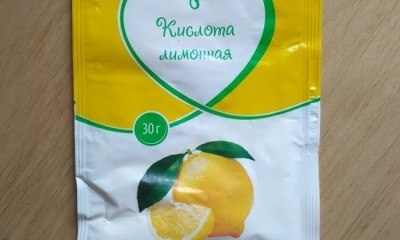 Remove the shutter and put it on the bottom of the large basin.
Remove the shutter and put it on the bottom of the large basin.- Dilute the baking soda with water to obtain a creamy texture.
- Rinse the curtain with water. You can use a shower head for this.
- Wipe mold stains with a brush and soda gruel.
- Plug the drain in the bathroom with a stopper and collect about 10 liters of water with a temperature of + 35 ° C to + 40 ° C.
- Dissolve citric acid in water.
- Rinse the curtain thoroughly in the prepared solution.
- Hang the curtain in the designated place.
Vinegar and baking soda or bleach
Exposure to baking soda (or oxygenated bleach) and an aqueous vinegar solution can help fight mold.
Operating procedure:
- The cleaning paste is prepared in advance. For it, use ½ cup of baking soda or bleach and a little water so that the consistency is like gruel.
- The curtain is removed and moistened with water.
- Transferred to the pelvis.
- Using a sponge and baking soda, wipe off any stains.
- A large bucket of water is poured into a basin and 1 cup of vinegar is poured and ½ cup of soda is added.
- The curtain is immersed in a basin.
- Leave for 1 hour.
- Rinsing the curtain.
- Take out.
- Without wringing out, they are hung over the bathroom.
Domestos
The use of Domestos is one of the most effective remedies against mold.
Procedure:
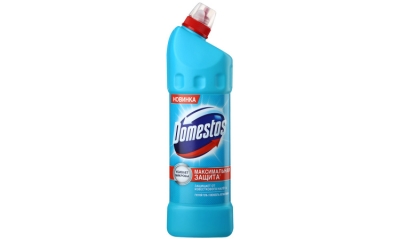 apply a few drops of Domestos to a damp sponge;
apply a few drops of Domestos to a damp sponge;- distribute the product over the entire surface, paying special attention to areas that are blackened by mold;
- leave the curtain for a quarter of an hour in the basin;
- wash by hand;
- rinse in water;
- hang so that excess moisture in the glass is in the bath.
Methods for removing limescale
Frequent contact of the curtain material with hard water can lead to limescale stains. Such formation spoils the appearance and reduces the service life of the curtain.
Lemon acid
For processing you will need:
- citric acid (1 small sachet);
- water;
- pelvis;
- brush.
Working process:
- Pour 2 liters of water into a basin.
- Dissolve citric acid in water.
- Soak stained areas for 60 minutes.
- Brush over lime stains.
- Rinse the product.
Vinegar
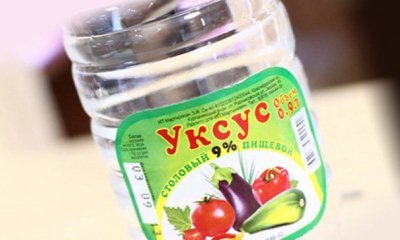 Yellow plaque on the material can be removed with vinegar. For processing you will need:
Yellow plaque on the material can be removed with vinegar. For processing you will need:
- pelvis;
- vinegar;
- tablespoon;
- water;
- brush.
Processing includes the following stages:
- Pour water (2 liters) into the basin.
- Measure vinegar (3 tablespoons) into water.
- Soak areas affected by limescale (or the entire curtain) in a basin.
- Withstand 60 minutes.
- Rub the stains with a brush.
- Rinse.
- Hang up.
Vanish
Traces of water drops that have dried on the curtain are not aesthetically pleasing and require timely removal. In addition to home recipes, household cleaning products will come to the rescue, designed to eliminate difficult stains. Examples of such drugs are "Vanish" and "Ace".
Removing rust and yellowness
Rust marks can form when the curtain comes into contact with wet metal. They may not come off with normal washing, so it is recommended to use homemade recipes for handling this kind of contamination.
Hydrogen peroxide and ammonia
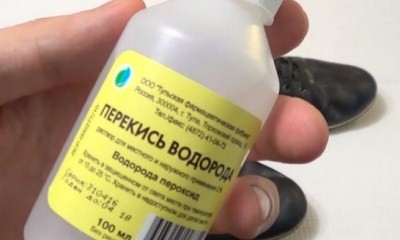 To treat rust stains on the material, you can use a simple recipe using drugs from the home first aid kit.
To treat rust stains on the material, you can use a simple recipe using drugs from the home first aid kit.
For cleaning you will need:
- hydrogen peroxide (50 ml);
- ammonia (150 ml):
- sponge;
- water.
Curtain processing order:
- Combine ammonia and peroxide in a bowl.
- Dip a sponge into the solution, treat all stains with liquid.
- Rinse.
- Wash normally.
Household chemicals
You can cope with rust using household chemicals:
- "Adrilan";
- "Sanita" and others.
Processing order:
- Apply a little of the chosen product to the sponge.
- Rub the stains with a sponge.
- Leave on for 5 minutes.
- Rub the dirt again with a sponge.
- Wash off with plenty of water.
- Wash.
Drying
The shower curtain is designed to be in constant contact with water. This does not harm the material. Proper drying involves observing the following rules:
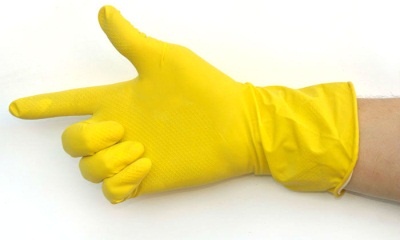 a ban on twisting and spinning;
a ban on twisting and spinning;- The best way to avoid wrinkles is to hang it vertically immediately after washing to allow the water to drain off.
- if possible, after washing, it is recommended to hang the curtain in a permanent place above the bathroom;
- you should not try to speed up drying with heating devices, and even more so with an open flame;
- do not hang a wet curtain in a place where it will be exposed to direct sunlight.
6 recommendations
The following tips will help to efficiently cope with washing curtains from the bathroom:
- It is not recommended to unscrew or wring out the curtain after washing.
- When washing, it is advisable to add a general purpose oxygenated bleach to the powder.
- You cannot use an iron to put the material in order. If the curtain looks wrinkled, it should be wetted and hung over the bathroom.
- If there are non-removable fasteners on the curtain, then its processing in the washing machine can be carried out only beforehand by placing the curtain in a special bag.
- Intensive impact on the material during the washing process should be excluded.
- Hand washing the curtain and treating stains must be carried out with rubber gloves.
Conclusion
Regular maintenance of your bathroom curtain will help prevent stubborn dirt and stubborn stains. After washing or taking water procedures, it is necessary to ensure good ventilation of the bathroom - as the prevention of stains and the appearance of pathogenic microorganisms.

